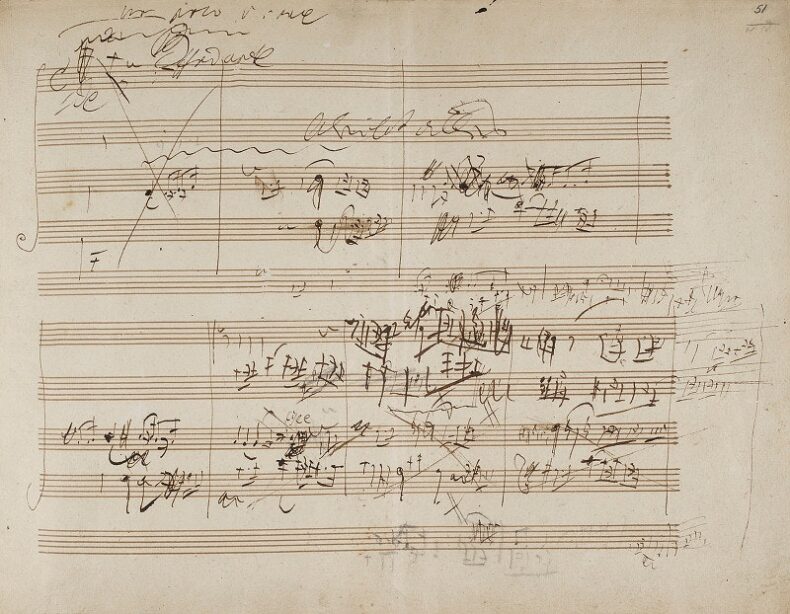
My grandmother used to take me to master classes at the Music Academy of the West in Santa Barbara, where young musicians from all over the world came to train. After buying our $10 tickets, we’d stand in the line of mostly senior citizens waiting for the doors to open. I’d hold her hand and rest my head on her shoulder, inhaling her Obsession perfume.
Nana wasn’t allowed to listen to music growing up, so as an adult she learned to play cello and taught her children and grandchildren to love classical music and jazz. We usually sat in the first or second row, close enough to hear the students breathing and their shoes squeaking. Barely-out-of-college opera singers wiped their sweaty hands on their pants and pianists dropped their sheet music. Then the teacher would arrive, the students would pull themselves together, and they’d get to work.
The students were very, very good. But as we listened, their instructors made small adjustments that transformed their performances from good to something shiver-worthy, perfect.
I thought about those master classes last month, when I went to a symphony for the first time since the pandemic began. Our friend Daisy, my husband Pete and I went to see the City of Birmingham Symphony Orchestra play in the Mondavi Center at UC Davis. The concert hall is engineered for optimal acoustics, with sandstone and wood panels tilted at just the right angles to make the sound balanced and clear no matter where you’re sitting. Even the seats are squeak-proof.
In the very back row of the very top tier, we could hear cellist Sheku Kanneh-Mason take a deep breath before he plunged into the first movement of Elgar’s Cello Concerto. It reminded me of my first time hearing live cello. I was twelve or thirteen, and Nana and I were watching a 21-year-old Polish cellist play Bach’s Suites for Unaccompanied Cello. My heart raced, my pupils dilated. I was crushed when Jakub walked off the stage toward a beautiful woman who turned out to be his wife. My grandmother knew her task was complete. With a little help from my raging hormones, I now loved classical music.
During intermission, Daisy and I fangirled over the Lithuanian conductor, Mirga Gražinytė-Tyla, and the way her fingers beckoned, summoned and shaped the sounds of 70 instruments into a seamless, surging whole. Looking down from the upper tier, it looked like she was making waves in the ocean, raising dozens of gleaming bows drawn across horsehair strings, then a shining line of gold flutes, French horns and tubas, then the bronze cymbal smash. “I’m in love with her hands,” the man standing in front of us chimed in, as we waited for our coffee and cookies.
We learned that Sheku Kanneh-Mason was playing a cello made by the Venetian craftsman Matteo Grofriller in 1700. Who is making something beautiful today, that will endure for 300 hundred years, we wondered. That made us think about all the other things that had to happen to make the concert possible. Elgar had to compose the concerto, which fell into obscurity after a disastrous premiere in 1919. Jaqueline Du Pré had to make her famous recording of the piece in 1960s, before she died of multiple sclerosis in her 40s. The musicians, who doubtless started out young, sweaty and terrified, had to practice until they were good enough to join the orchestra. Engineers, architects, and construction workers had to build the concert call. We had to invent and administer vaccines for a host of deadly viruses.
But so much else had to happen long before that. We had to evolve the ability not only to hear rhythm, but to anticipate the next beat. There’s some evidence that animals can do this, but humans are particularly good at it. An orchestra is proof of this, including least five types of instrument that we’ve invented to vibrate air in different ways, and learned to play in time, together. Some vibrate a membrane, like the skin of a drum. Others vibrate columns of air, like the 40,000 year-old flutes made of hollow vulture wing bones that archaeologists found in a cave in Germany. In chordophones like violins and cellos, a vibrating string makes the sound, and on and on it goes til we get synthesizers like the Minimoog, which gave us the bass beat in funk.
Over time, we’ve learned how to get into what Daisy (a top flatpick bluegrass guitar player at 17) and other musicians sometimes call “the pocket.” That’s when a band is so in sync that the music doesn’t lag or drag, but moves. Getting into the pocket helps us bond; juices up the brain’s pleasure circuits; boosts our immune systems. Mice and rats benefit from listening to music, too, which suggests there’s something very ancient indeed going on in our neural circuits.
Nana used to let a pet rat named Snowball ride in her shirt pocket at home while she made breakfast and blasted the classical radio station. She would have loved to see nearly 1,800 humans purchase tickets to the symphony, then sit quietly together and nod their heads in time. Not a single person allowed their cell phone to ring or buzz during the three-hour program, which would have made her happy. I like to think we had more company in the theater than we realized: perhaps a few field mice, listening quietly from their burrows.
Your story made me think. I’ve often heard music called the universal language but it may be more truly universal than how I originally interpreted the phrase. Thank you.
Thank you, Pam!
This is beautiful.
(I listened to Yo-Yo Ma playing Bach’s Cello Suite No 1 while reading it.)
I’m glad you liked it, David. Thank you.
Gorgeously said.
Thanks!
Autopuff adjacent: https://blobthescientist.blogspot.com/2014/12/master-class.html